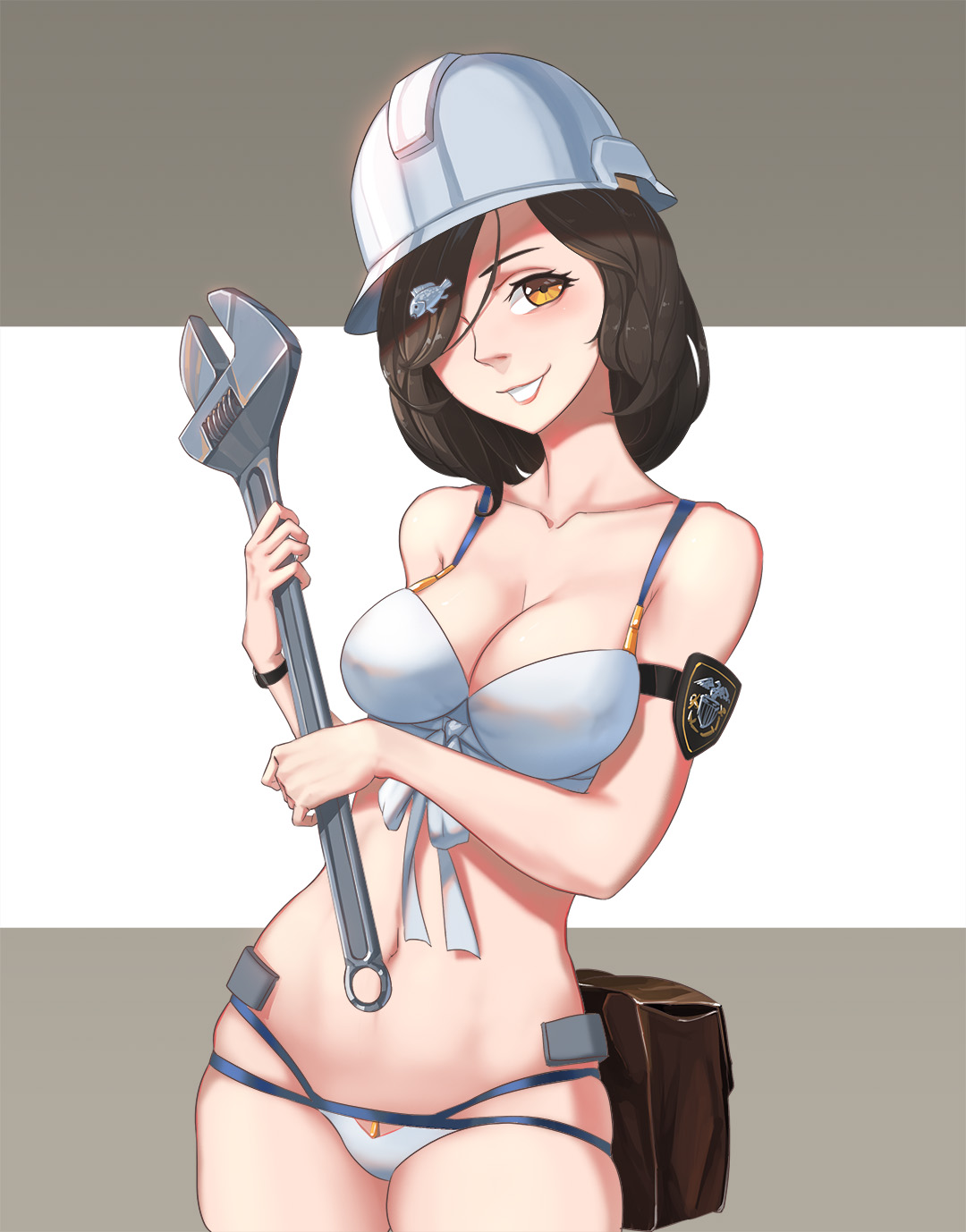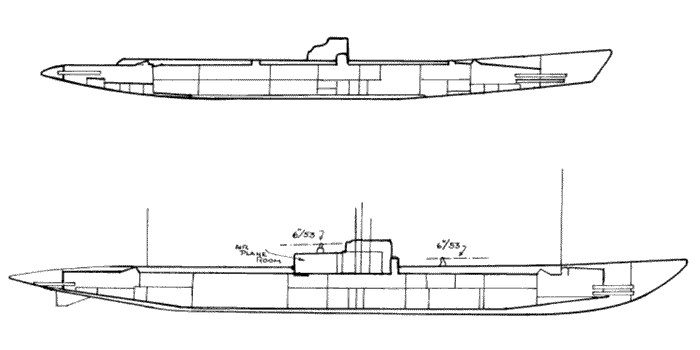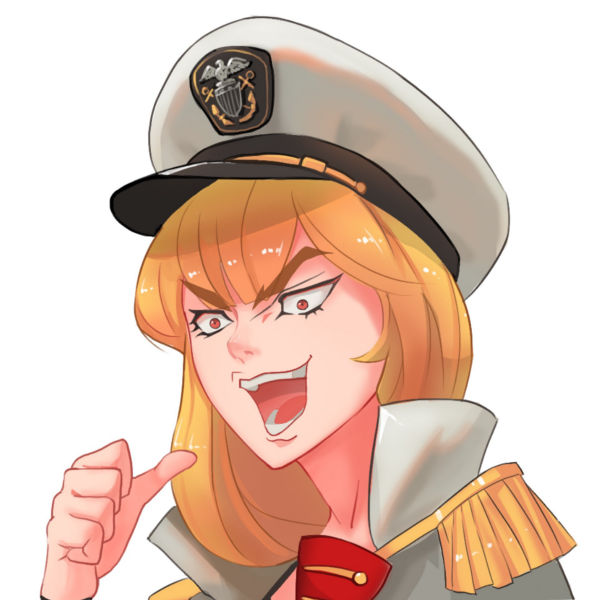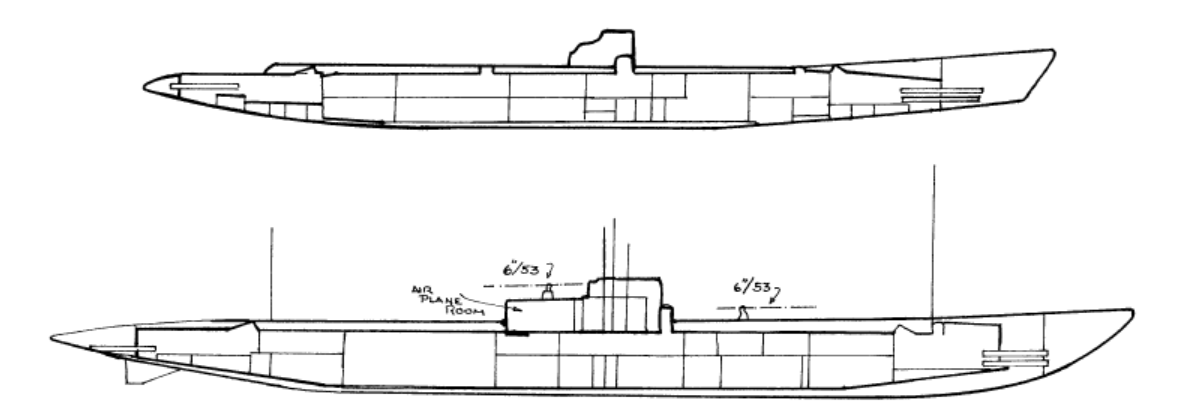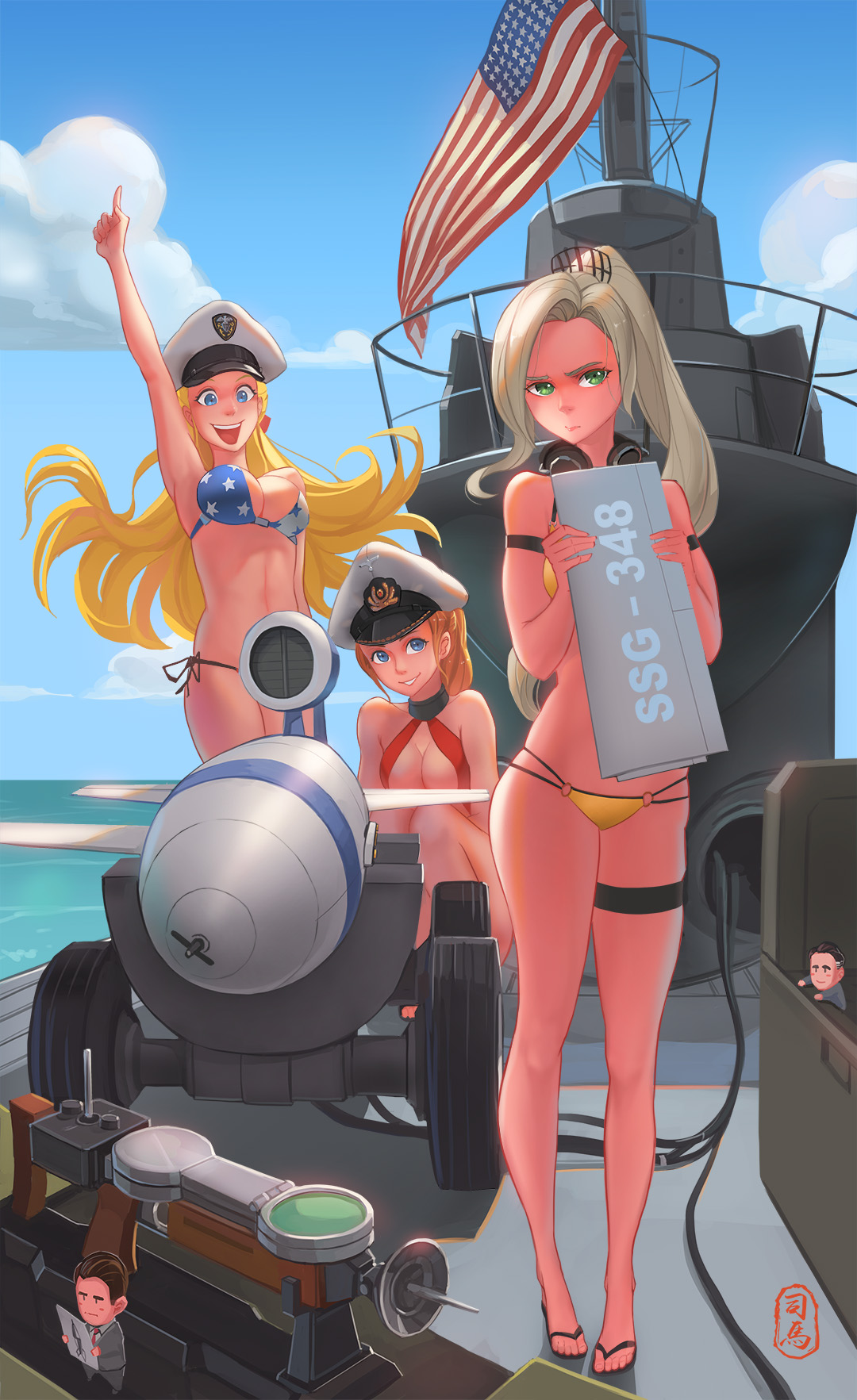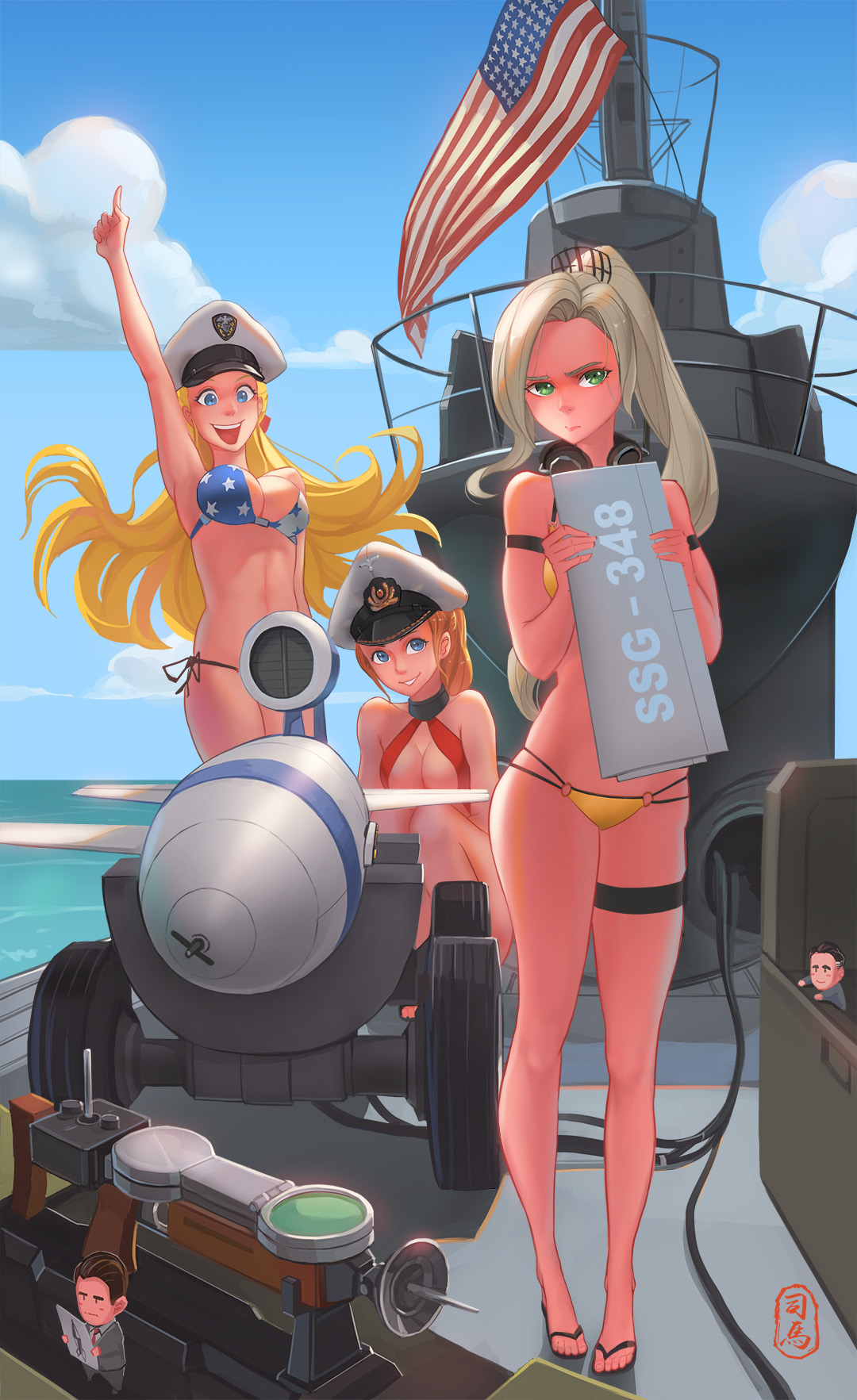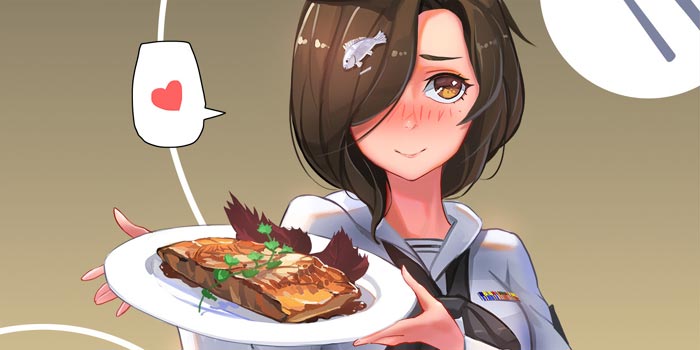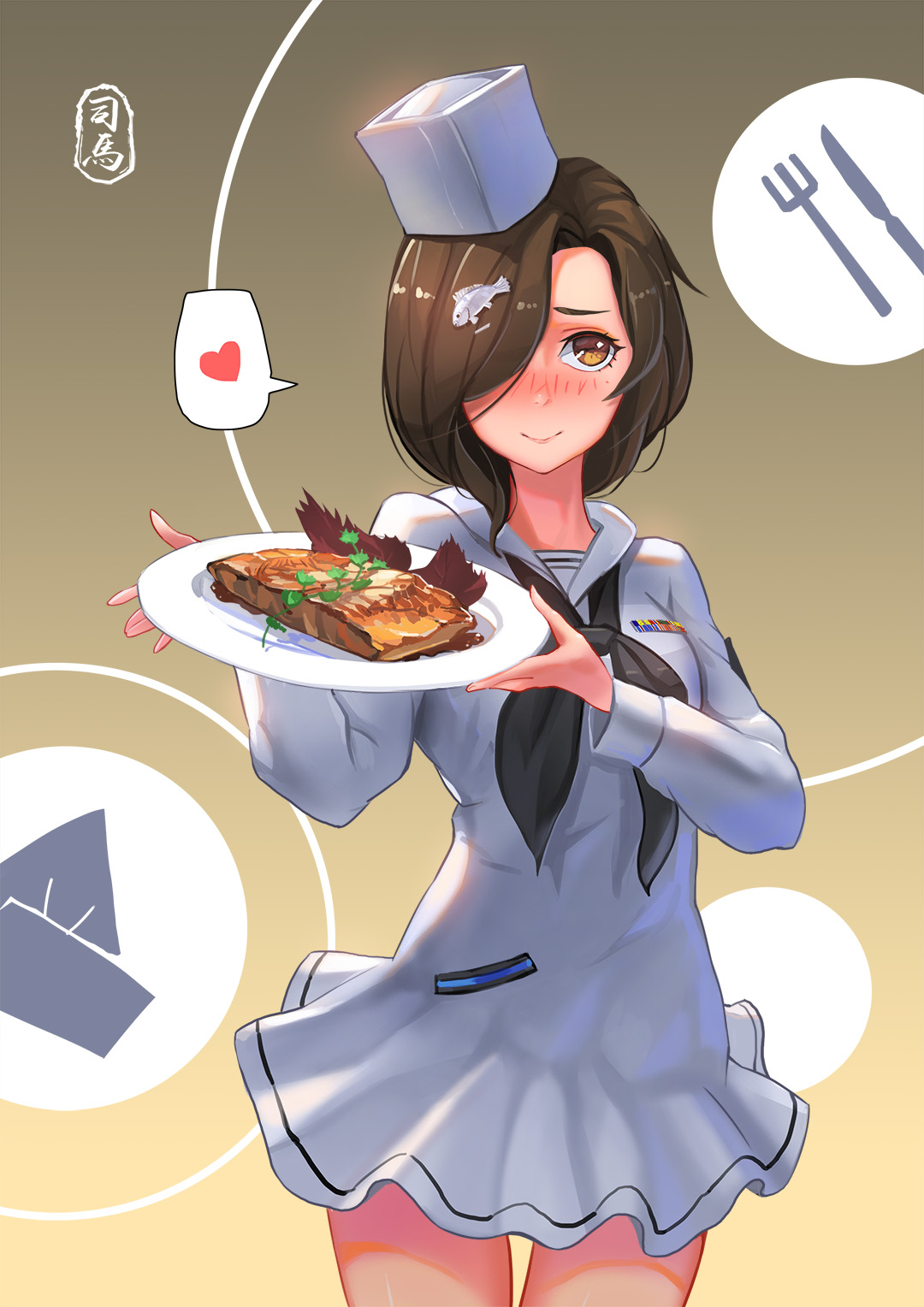
Hello everyone. It’s me again. I’m having tons of fun with the title!
I know Morgane’s already said that the updates aren’t daily but I still feel bad about missing them. Sadly, sometimes technology gets in the way.
Anyways, today’s topic is sort of a mail call question, but it was more of an extended conversation between friends that I thought I’d organize. In short, the conversation got onto the topic of fanservice – specifically, that of pin-up girls.
There’s a few things I’d like to talk about. Since, well, I’m going to guess that a lot of our readers love looking at pretty girls in various states of dress (or undress). That’s fine! But, since you’re here and all, I’d really like you to understand the purpose of the pin-up, how it came about, and what role it played specifically during the Pacific war.
Believe it or not, the pin-up was implicitly encouraged by the military. The very popular pseudo-official military magazine, Yank, had pin-up girls for every issue. The overarching idea?
Um. Uh… If you have pictures of a pretty girl to look at, maybe you won’t go look for prostitutes and go cause trouble.
I’m serious.
Here’s why. During WW1, we found that military men will be military men. They will get drunk. They will chase after and sleep with girls or prostitutes. They will get into fights. Of these, STDs were of a particular concern. Our military forces suffered significantly from it, and the Army was determined to not to have it repeat again.
But how? One way, of course, was through education. The military generally maintained the viewpoint that sex was something that should be reserved only for your best girl at home – that is to say, within marriage. See below for a quote coming straight out of an army publication.
If you wait until you marry, you’re safe and keep your self-respect. You also play fair with the “girl back home” whom you expect to play fair with you. There’s no substitute for morals!
Sounds like something I’d agree with, heh. But, that’s not all. The military also tried to foster a healthy culture by providing significant resources towards education, particularly that of venereal diseases.
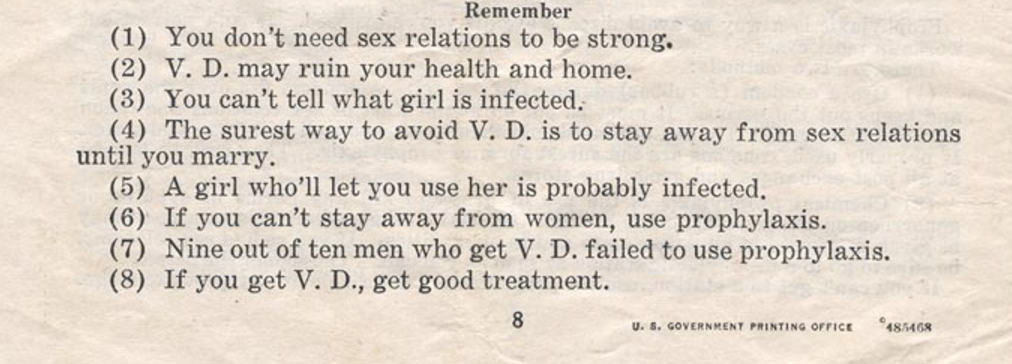
They also created posters like these.
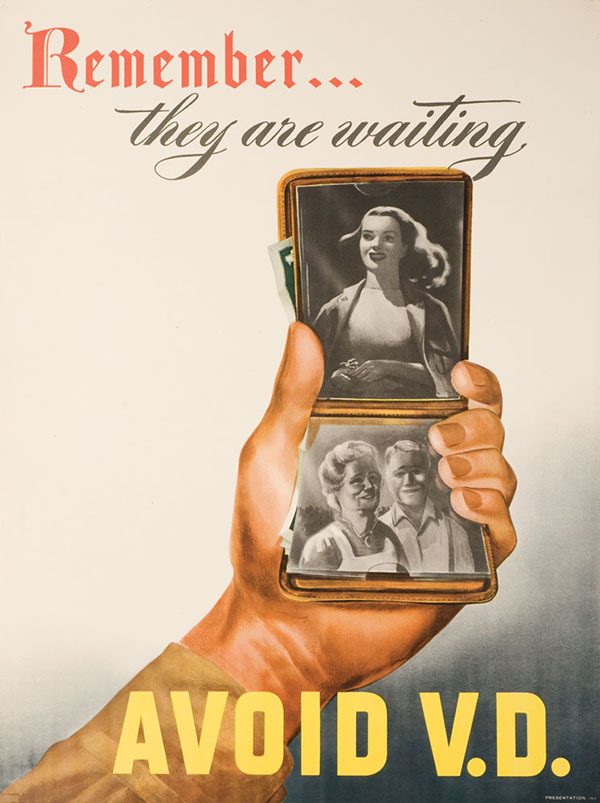
Ah. See? Now that’s where we’re getting into the subject matter. As I said above, pin-up girls were created to be representative of something more than just a nice pair of legs for the guys to look at. You’ll notice that some of the most popular pin-up girls aren’t necessarily the prettiest. Rather, they look kind of average. They were neither particularly tan nor particularly pale, neither particularly plain or particularly glamorous, neither particularly bosomy or flat, neither svelte nor supple…
You get the idea. Pretty average. Something like the girl next door. Something like girls you might know.

Indeed! Now you get the idea. The appeal of the pin-up girl is far more than sexual. It appeals to something much more fundamental to each individual soldier on the battlefield. In a nutshell, they were American ideals, personified. They’re icons in which the boys out in the frontline would fight to defend. Something literally meant to be “pinned up” inside a vehicle or a plane or a ship to look up to.
Don’t believe me? There’s some pretty good statistics out there showing that while sexually suggestive or even explicit pin-ups were very popular with the men, the most popular pin-up photos like Betty Garble were pretty ordinary.
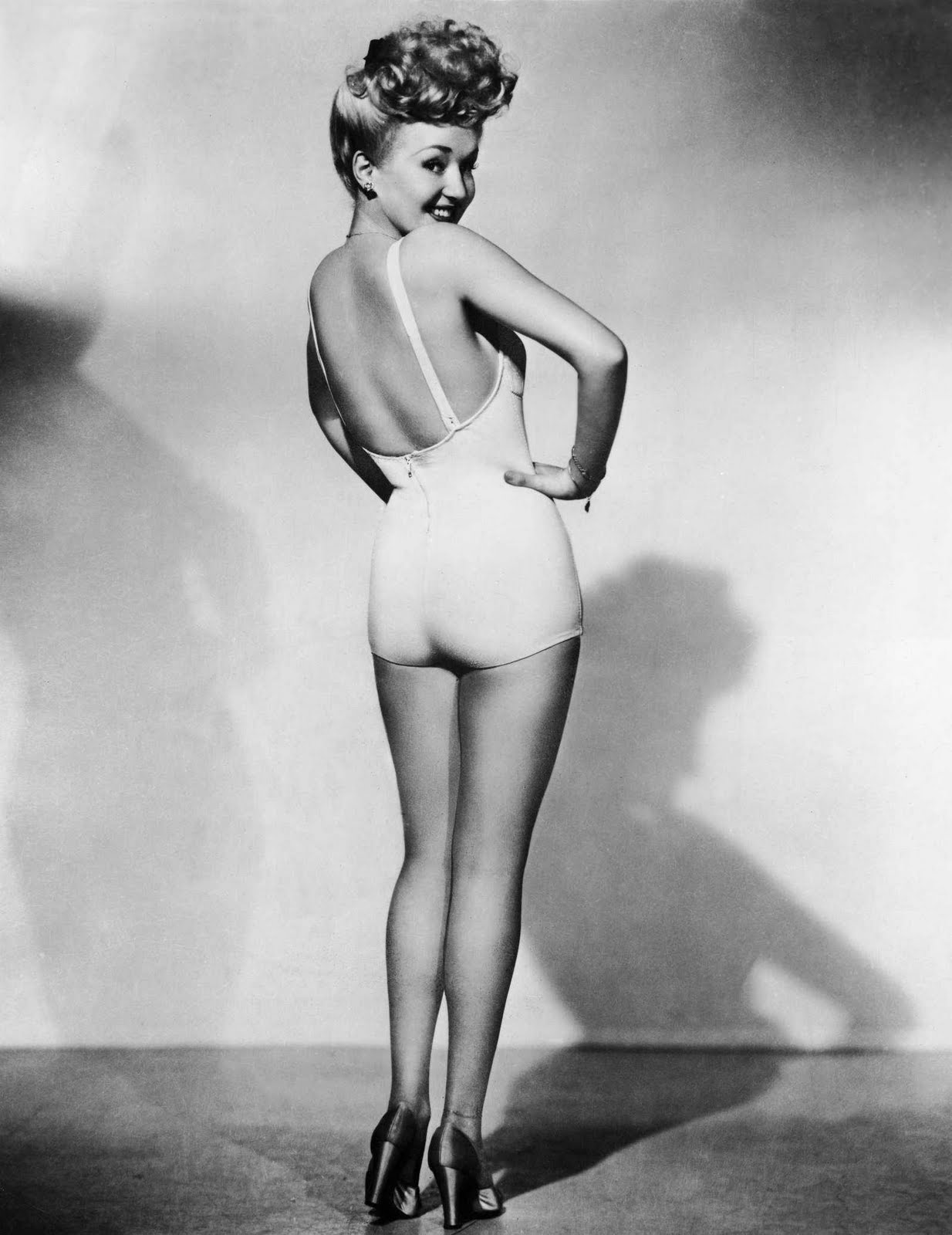
Yeah. It’s that one. Pretty simple, isn’t it? But it’s the simplicity that appealed to the soldiers out front. In fact, Garble herself told the wives and girlfriends at home: want to cheer your man up? Then send pictures of yourself as a pin-up girl! Take those pictures in heels and bathing suits and looking coy! The guys’ll love it!
And they totally did. Remember, the boys were boys – many of the soldiers in WW2 signed up at 17, 18, 19. There’s a sort of homeliness to the overall image of the GI that makes it easy to see why they were the direct counterpart to the “plain” pin-up girls. They were supposed to be the average decent innocent farm-boy next-door, coming out here to fight to defend the American way of life. Doesn’t mean they don’t think about girls! If you’re at that age, heck, I’d say girls are probably on your mind a whole lot of the time!
So, to that end, the pin-up was an important contributor to morale. It’s not really something you can put a statistics to it, but from the many, many, many instances it showed up? I’d say it’s definitely an important part. It was just as important – in its own way – as the USO ladies, the broadcasts from base, the letters from home, and the care packages delivered.
Pretty neat, huh?
Now, I’m going to turn to us shipgirls in Pacific. I want to talk a little bit about the design process in which Morgane and K9 and everyone else went about designing Silent Service’s subgirls.
Heck, actually, you know, it sort of goes for Pacific’s shipgirls as a whole. I can’t speak much for the non-Americans in Pacific, but you’ll notice that outside of a few oddities, by and large the American shipgirls have very plain looking appearances. As a whole the hairstyles are simplistic. Virtually nobody wears make-up. Colorful exotic hair colors are the exception and not the norm. You won’t find any sort of tattoos, nose-rings, and others of the sort either.
Well, plain, for an anime-styled character, anyways.
Now, after seeing the above, do you see why? Do you see what might have inspired us to follow our particular design paradigm?
Hey, I’m not saying that our girls can’t be sexy or alluring or hot. We’ve got plenty of that, too! After all, you can’t be the best if you don’t look the best, and against the Abyssals we’re going to need to be the best.
But at the end of the day? Each one of us shipgirls have a different idea about how much skin we want to show. That’s more or less inherent in the “default” costumes in which we appear in, and we are almost without exception comfortable with how much or how little skin we want to show.
Our appearances are designed to be attractive. The artists like drawing cute girls and sexy girls and pretty girls. We are, after all, meant to represent a particular vision and a particular set of ideals. Each one of us does that in our own way.
Me? My position? Uh…
W-what’s that got to do with anything? I mean, I already told you how I felt about this kind of stuff! It’s in the box quote up there?
…W-w-w-wait wait wait. No. That’s not – That’s not what I mean! I’m not some cat lady or man-hater either. I just have my own ideas about what’s acceptable and what isn’t. Okay?
…
I’M TOO BUSY FOR DATING, OKAY?

…

Alright alright alright. I’m done. Sorry! I knew it was a bad idea to try to comment on this. Here’s a pin-up shot I did. Now go out there and be a good family man!
